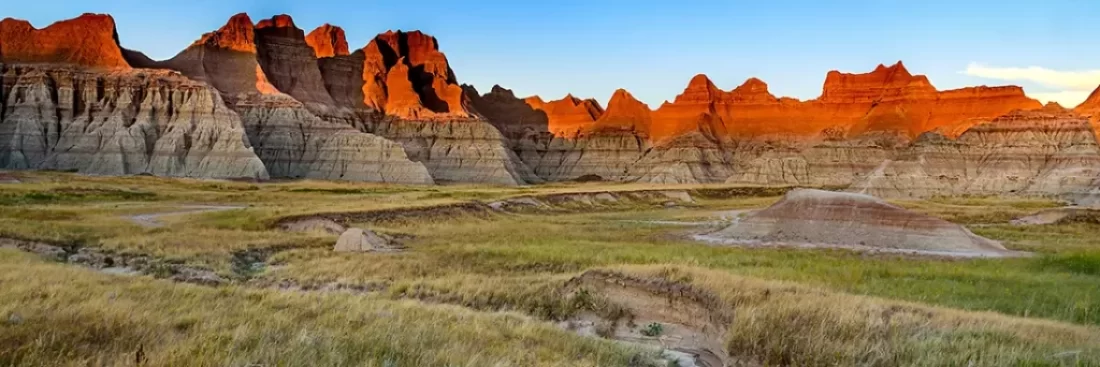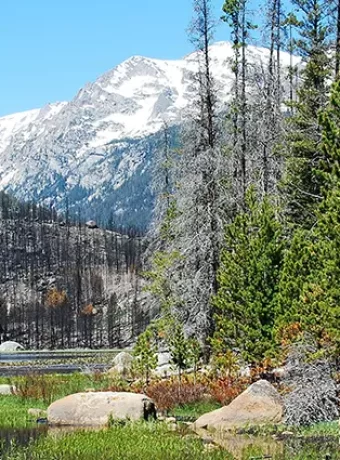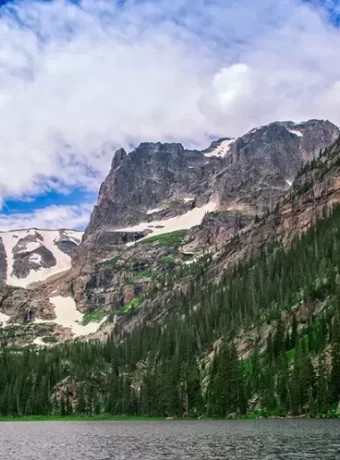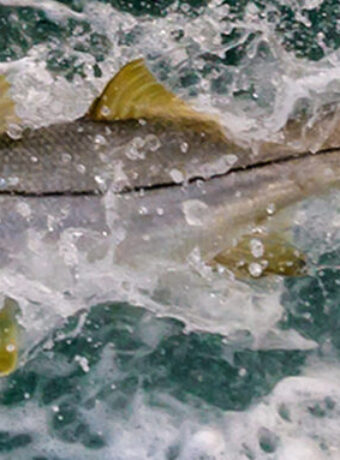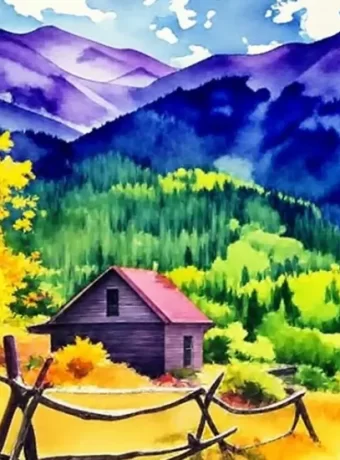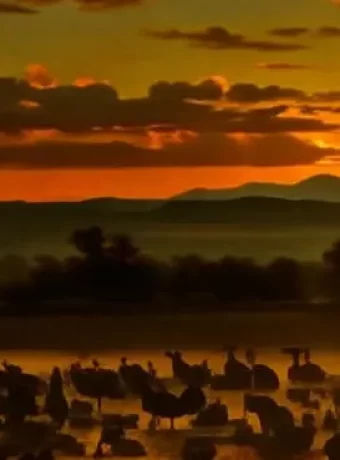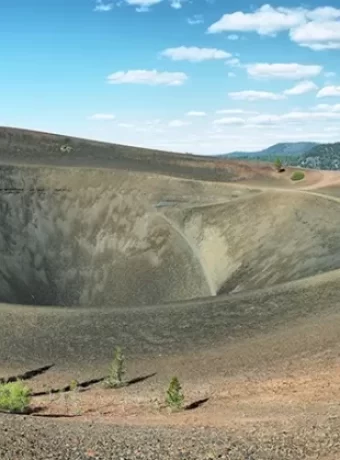Exploring the Past: History Hiking in Badlands National Park
History hiking in Badlands National Park is more than a walk; it’s a journey through millennia. Witness traces of those who walked this land before, surrounded by stunning rock formations. These formations whisper stories of time. This isn’t a theme park; it’s a real place shaped by eons, infused with human experiences. Many are now gone but not forgotten. If you walk these trails without knowing the history, you’re missing half the view. I have visited the Badlands, Mount Rushmore, and a Favorite Custer State Park more then a dozen times over the last 20 years. And I keep coming back, I really like exploring western South Dakota.
Many history hikes overwhelm you with dry facts. You wander from place to place, but it doesn’t transport you. This article are hope will give you what’s needed to connect with this land. Get ready to explore Badlands National Park, an adventure where past meets present. You will also read about history hiking in Badlands National Park, too. When you are done exploring the Badlands, Fly Fish South Dakota, some excellent fly fishing and hiking.
Table of Contents
History Hiking in Badlands National Park: Where to Begin
Start your Badlands history hike at the Ben Reifel Visitor Center in South Dakota. This place isn’t just pamphlets and maps; the Badlands story unfolds before you. The intersection of geology and human life is laid out for you to absorb. Inside you’ll find great resources for exploring Badlands National Park.
Check out the exhibits covering natural and cultural history. Then head into the fossil lab to meet the past. Watch paleontologists working on incredible findings, uncovering ancient mammoth hunters and proof of times when “water monsters” roamed. Before paleontologists arrived, the Lakota people knew these as Unk-tegila, essential to the Oglala Lakota creation story.
You can take what you’ve learned to nearby national parks. Remember different fees, passes, and conditions apply; check the National Park Service website. Explore and make your own unique connections. You’ll learn a great deal on your trip.
Trails That Speak Volumes
The Notch Trail offers more than scenic views. Find a historic log cabin. The cabin whispers stories of early 20th-century ranchers, a testament to those who called these challenging lands home. Learn about cattle replaced bison here.
On the Door Trail, fossils from bygone eras rest alongside evidence of early native inhabitants. The ancient petroglyphs tell powerful, enduring stories. The Window Trail takes you through old ranching sites. The view unfolds a history both grand and personal. You will notice fur trappers from European arrivals, among many other signs of human life from previous years.
Hiking Door Trail
The Door Trail in Badlands National Park is a great hike for history buffs. It’s a short, easy 1.5-mile out-and-back trail. This makes it perfect for families with kids. But don’t let the short distance fool you. The Door Trail packs a lot of punch. The trailhead is easy to find right off the Badlands Loop Road (Highway 240). You’ll begin by walking through a mixed-grass prairie. Keep your eyes open for bison! They often graze in this area.
As you continue, the trail descends into a valley. The valley walls start to rise up around you. They are striped with colorful bands of rock. These rocks hold millions of years of geologic history. Look closely, and you might spot fossils. This area was once an ancient seabed. Many prehistoric creatures called this place home.
The trail then leads you to a natural “door” in the Badlands Wall. This “door” is a narrow break in the rock. It gives you a fantastic view of the surrounding badlands. It’s a great spot for photos. This area also has historical importance for Native American tribes. They left behind petroglyphs, ancient rock carvings. Although you won’t see them on this specific trail, they are nearby in the park.
The Notch Trail is another great option. It is just down the road. It also offers history and stunning views. The Window Trail is longer but equally rewarding. It takes you through an old ranching area. The Door Trail, though, is perfect if you want a quick but powerful taste of Badlands history.
Bring lots of water, because South Dakota summers are hot and dry. Wear good hiking shoes, because the trail can be uneven in places. And don’t forget your camera. You will want to capture the beauty and history of the Door Trail.
Beyond these options lies the Cedar Pass area, a place of sacred and scenic significance. This location features prominently within the north unit. As Lakota elder Short Bull explained, his father prayed in the Cedar Pass area. It’s one of the few spots where trees grow thick near the Badlands Wall.
Short Bull’s experiences illuminate the cultural significance of certain Badlands areas. He recounted his experiences and native knowledge in National Geographic Atlas of the National Parks. Learn more on the park service website.
Hike Homestead Trail
Imagine this: you’re hiking through Badlands National Park. The wind whispers stories of Lakota Sioux who once roamed these lands. The sun paints the badlands formations in shades of orange and pink. This is the magic of the Homestead Trail.
But the Homestead Trail isn’t just about pretty views. It’s a walk through time. This short, easy trail takes you past the foundations of old homesteads. These pioneers tried to carve out a life in this harsh landscape. You can almost picture their sod houses, their gardens, their struggles, and their dreams. The trail is a powerful reminder of human resilience.
Although it’s a short hike, you’ll still want good hiking shoes. The terrain can be a little uneven. And this is South Dakota, so bring water. Lots of it. The sun can be intense, especially in the summer. A hat and sunscreen are your best friends.
The Homestead Trail is close to the Ben Reifel Visitor Center. Stop by before your hike. The center offers exhibits about the park’s natural and cultural history. This will give you a deeper appreciation for what you see on the trail. The Fossil Exhibit Trail is also nearby. It’s worth checking out if you’re interested in the ancient creatures that once roamed the Badlands.
While you’re exploring the area, consider a longer hike on the Notch Trail or the Door Trail. Both trails offer stunning views and a glimpse into the park’s ranching history. They’re more challenging than the Homestead Trail, but they’re well worth the effort.
So, next time you’re in Badlands National Park, take a stroll down the Homestead Trail. It’s a short hike with a big story to tell. You’ll connect with the past and appreciate the beauty of this special place.
Hike Medicine Root Trail
Want an easy hike with amazing views? Check out the Medicine Root Trail in Badlands National Park. This four-mile loop is perfect for all skill levels. It’s mostly flat, so it’s a good choice if you’re not up for a tough climb.
The trail gets its name from the Lakota people. They believed the plants along the trail had healing properties. As you walk, picture them gathering these plants long ago. The landscape has barely changed. You might feel like you’ve stepped back in time.
Keep your eyes peeled for wildlife! This area is home to bison, bighorn sheep, and prairie dogs. Bring your binoculars for a closer look. But remember, admire them from a distance. Getting too close can be dangerous.
You’ll also see lots of wildflowers in spring and summer. The colors add to the beauty of the Badlands formations. Take some photos but leave the flowers for others to enjoy. This helps protect this special place.
This trail offers access to other trails. So, if you’re feeling energetic, you can extend your hike. The Saddle Pass Trail and the Castle Trail are nearby. Check with a park ranger first. They can give you the latest trail conditions and any safety tips.
This hike offers more than just scenery. It’s a chance to learn about history and nature. Plus, it’s a fun way to spend a day outdoors. Bring plenty of water, sun protection, and good hiking shoes. Enjoy your hike on the Medicine Root Trail!
Hike Window Trail
The Window Trail is a great hike for history buffs. This trail gives you fantastic views. But it also shows you what life was like back in the day. This moderately challenging four-mile out-and-back hike takes you to a cool rock formation. It looks just like a window in the Badlands Wall.
As you walk, you’ll see where ranchers used to live. You might even spot old homesteads and fences. It’s like stepping back in time. The trail sits in the North Unit of Badlands National Park. Remember, this area is known for its hot summers and cold winters. So, plan your trip accordingly. This area has a lot of history. Lakota people have called this place home for thousands of years.
While you’re hiking, take a moment to imagine what life was like for the early settlers and ranchers. They faced tough conditions out on these plains. Think about the wildlife they might have encountered. Bison, pronghorn, and bighorn sheep still roam these lands. You might even see some yourself!
Keep your eyes peeled for fossils, too. The Badlands are world-famous for their fossil discoveries. You might stumble upon a piece of the past. Bring plenty of water. The Badlands can get very dry, especially in the summer. Wear good hiking boots. The terrain can be rocky and uneven. And don’t forget your camera. The views are amazing.
Exploring Badlands Beyond the Trails
Outside marked trails, evidence of ancient lives abounds. Scattered remnants tell tales of people who made life here and left their mark. Old homesteads whisper stories of the past, where wheat fields replaced prairies.
Start at the Homestead Overlook. Enjoy panoramic views and remnants of homesteads. Gain a perspective beyond historical facts; think about people surviving against the odds. Become a part of the Badlands’ larger narrative.
Connecting with the Lakota Story
Native stories offer much more than museum displays. These accounts, passed down through generations, bring a different light to the Badlands. Consider these points when engaging in Badlands National Park history hiking.
Understanding the Land’s True Name: Mako Sica
The Lakota name, “mako sica” or “bad lands,” emphasizes the importance of indigenous voices in historical parks. It underscores the connection between language, identity, and the land.
Europeans saw the land as dangerous and hard to navigate. But the Oglala Lakota connection is deeper, with stories far older and wiser. They watched as cattle replaced bison.
Protecting this Story
All national parks, including Badlands, depend on us to be caretakers. Stay on trails to avoid disturbing signs of the past. Respect wildlife; animals are key to the natural balance. This includes bison and black-footed ferrets.
Every creature, rock, and ancient glyph plays a role in a story much bigger than ourselves. Gasoline-powered vehicles replaced horses, changing how humans interact with this environment. Learn how lives centered around this unique place.
FAQs about History Hiking in Badlands National Park
What is the story behind the Badlands?
The Badlands story begins 75 million years ago under an inland sea. The park’s formations reveal dramatic transformations. The sea retreated, a forest grew, and then prairie ecosystems thrived. The Pierre shale and other formations here emerged from an era when this area was a sea covered in marine life. From these changes emerged the “bad lands,” meaning “bad lands to cross.” Over time, gasoline-powered vehicles replaced horses as well.
What are some major events that happened in Badlands National Park?
Major events include becoming a national monument (1929) and a national park (1978). Another important date is 1890, when the Wounded Knee Massacre happened near the Badlands. The event is a grim but pivotal moment in history.
What are 3 interesting facts about Badlands National Park?
- Fossils from here have advanced vertebrate paleontology.
- A mixed-grass prairie spans vast regions within the park.
- The park has deep significance for the Lakota and other Native groups.
Why are Badlands sacred?
Places within Badlands hold sacred meaning for Native communities. The Oglala Lakota see it as historically significant and maintain deep ties here.
Conclusion of Badlands National Park
History hiking in Badlands National Park offers something for everyone, from seasoned hikers to families visiting Badlands National Park. It combines geology with human stories, revealing details of our larger journey. Each step on Badlands National Park’s trails connects us to the past. The park allows us to appreciate those who lived here – now gone but never forgotten.
